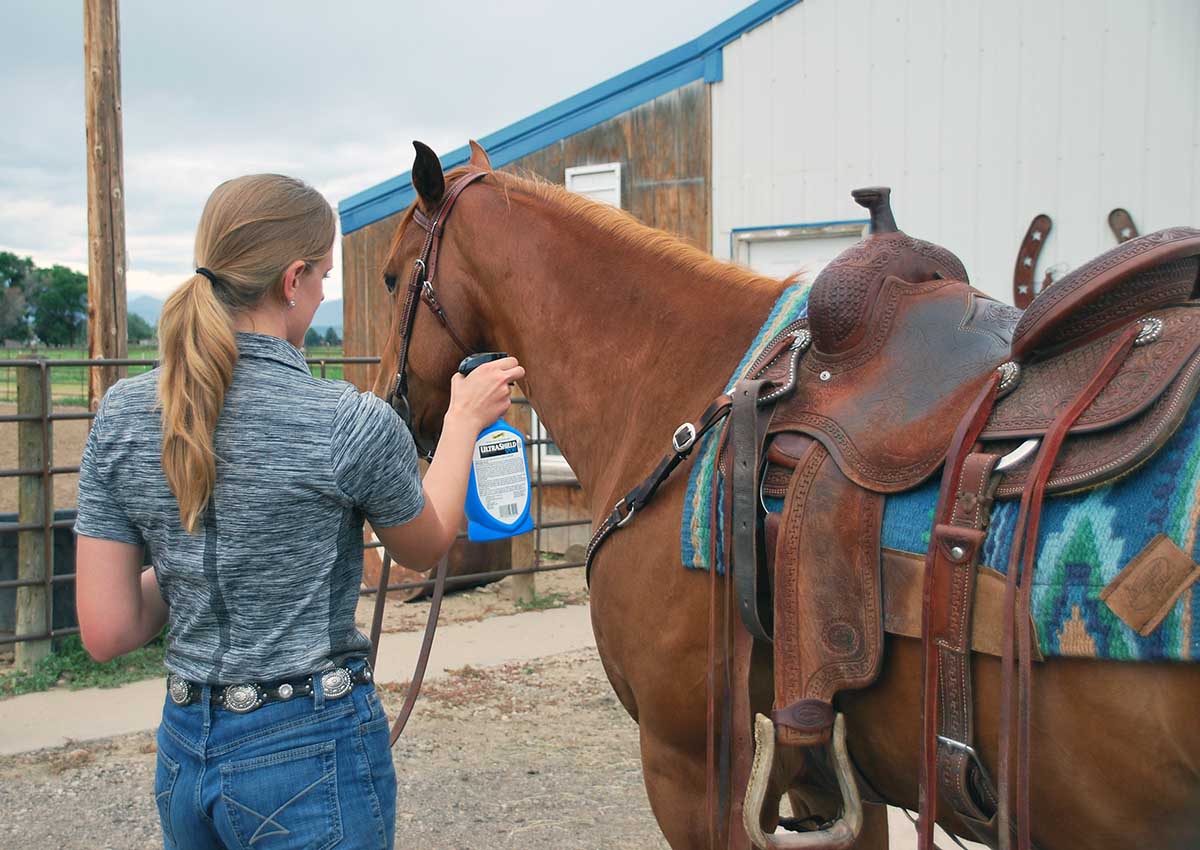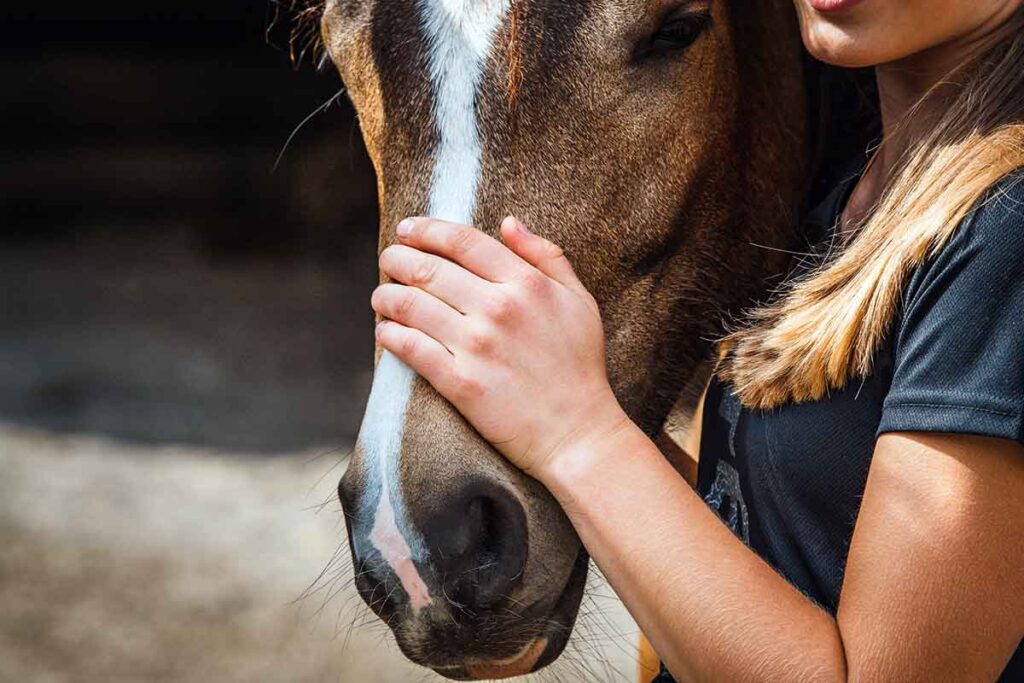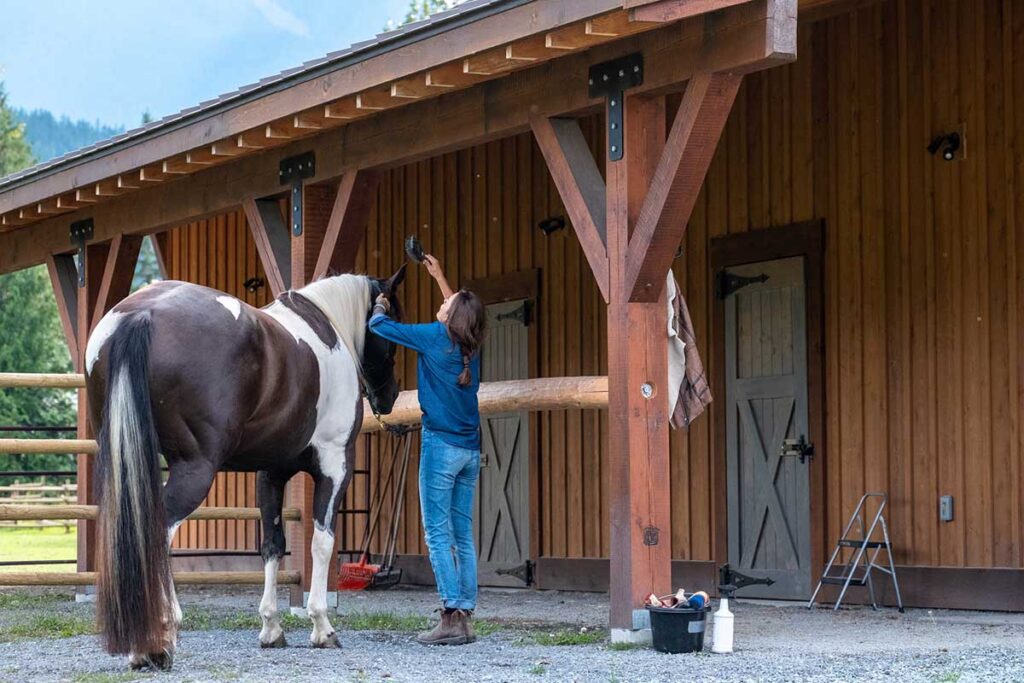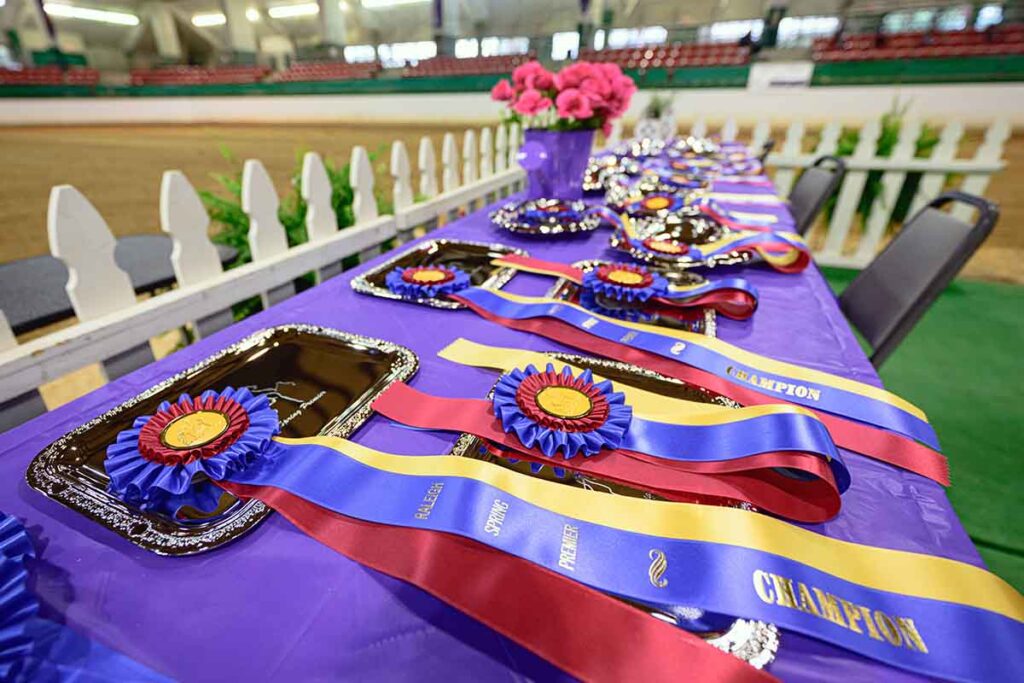If you’ve spent any amount of time around horses, you know flies are simply part of the package. As a responsible horse owner, however, you’ll want to take steps to minimize flies in your horse’s environment. Not only are they a nuisance, but they can also create sores, carry diseases, and cause horses to stomp their feet to the point of hoof damage. So what can you do?
Whether you board your horse or keep him on your own property, here are some useful tips to help you reduce fly populations and their negative impact on you, your horse, and the farm.
Manure Management

Flies live and reproduce in your horses’ manure, so you need to attack them where they start. Keeping stalls and runs clean is the first step. Spreading the manure is the best solution, breaking up and drying out the flies’ home will decrease their presence. Spreading is a science in itself; know how much manure you’ve got and don’t overspread on small acreages. A good rule of thumb for spreading is one horse’s manure for every five acres. Of course, you should check with your local agriculture extension agent for specifics in your area.
If you do pile, consider location as well as composting. However, a large pile is a prime location for fly reproduction.
General cleanliness follows in this vein. Don’t allow for standing water near your corrals, clean water buckets weekly, keep grain covered, and sweep up excess hay, muck, and dust in the barn.
Bugs vs. Bugs
In recent years, fighting flies with other insects has become a desirable solution for horse owners wary of chemicals. As with any method, there are several options. The first is Fly Predators©, tiny wasps that don’t sting animals or people. These beneficial, tiny insects can easily control flies.
Fly Predators kill flies in their developing stages while they are in the ground. The female fly lays her eggs wherever there is decomposing organic material. Those eggs hatch and become larvae, which eventually form a cocoon before hatching into the next generation of flying pest. When you spread the Fly Predators in that area, the tiny wasps lay eggs in the fly cocoons, thus stopping the adult fly from hatching.
Fly Predators must be replenished on a regular basis to ensure you have the best fly control. They don’t become a nuisance, because they have a very short life span.
Finally, an adult fly’s natural enemies are birds and bats. While you may already have birds around your barn, bats are easy to attract with the use of a bat house placed on the southern side of your barn.
Fly Traps
Even with the advantages of the above and below listed techniques, flies will likely appear at your barn. A single fly can produce up to 1,000 offspring within a month. Trapping them is an effective and fulfilling way to kill the ones that got away.
The most common trapping products are jars filled with an attractant, either natural or chemical, which lures flies in where they can’t escape. Another effective and time-honored method is fly paper. Place either or both contraptions liberally throughout your barn, runs, and corrals. If your house happens to be near the barn, you may even want to put a jar near the back door.
Chemical Attack

The chemical aspect of fly control ranges from automatic misters set up to control an entire barn to feed-through fly control to bottles of fly spray. Look for the chemicals pyrethrin, cypermethrin, and permethrin in any of the spray fly control products.
There are numerous variations of chemical applications for horses. Some are vapor repellants, which merely keep the fly from landing on your horse. Others, which usually contain permethrin, are lethal to flies, and the fly will die shortly after it lands on your horse. Many products contain a combination of pyrethrin and permethrin: a fly spray and repellant combination.
Spray on, spot on, wipe on, sweat-proof, long-lasting, sunscreen, coat conditioning, wound safe, and all-natural are options from which to choose. To decide what’s best for you, consider how often your horse is out of the barn. If he’s out of an otherwise fly-free barn for a few hours a day, a simple vapor spray-on might be best. For show horses, a coat-conditioning fly spray might be right. If you’ll be working your horse outside all day, consider a sweat-proof spray with sunscreen protection. For mares or retired horses turned out to pasture, you should look into a long-lasting wipe. Thin-skinned horses might need a diluted or all-natural spray. Basically, there is a broad enough spectrum that you’re sure to find one that best suits you and your horse.
For a larger-scale attack, automatic misters are very effective. Most companies will work with you to customize a program that will most efficiently combat the fly problem in your barn. Again, the options are nearly limitless in regard to the kind of spray you use.
Finally, the feed-through fly control options are worth considering. If you do choose a feed-through option, you should begin the regimen in spring, before you see the first flies. However, it is never too late! Feed-through fly control stops the larvae, but not adult flies, so you will need to use other control measures as well.
Fly Control Apparel

On-horse fly control is the final method of defense against flies. Fly masks and sheets are the most common, and some companies offer head and face protection products with ears. Fly wraps are also an option. These devices are breathable mesh wraps that wrap around the horse’s lower leg and can eliminate stomping and pawing.
Take-Home Message
Don’t let flies make your horse’s life miserable! By taking preventive measures to reduce the fly population on the property, you’re not only improving your horse’s comfort and quality of life but also protecting his health. Keep in mind that fly control requires regular maintenance and effort, so be consistent with your approach. By implementing the recommendations we outlined in this article, you’ll be on your way to creating a more comfortable environment for you and your horse to enjoy.
The article originally ran on StableManagement.com.








